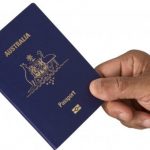Degrees of Harm in Assault Offences

Assault charges are differentiated by a number of factors, including whether the act was done ‘recklessly’ or ‘intentionally’, and the extent of injury (if any) caused.
‘Common assault’ is an offence under section 61 of the Crimes Act 1900 (NSW) which can occur without any touching at all; just causing another person to ‘apprehend immediate and unlawful violence’ is enough. Examples may include raising a fist at another in anger, or threatening to hurt or kill them in their immediate presence.
A common assault can also take place through unauthorised touching, even if the other person is not fearful for their immediate personal safety. This is called ‘battery’, and can happen even if no injuries are inflicted, or the injuries are very minor.
The maximum penalty for common assault is two years’ imprisonment and/or a fine of $5,500.
For other types of assaults, the nature and degree of injury occasioned (caused) can be an important factor in determining the applicable maximum penalty, as well as the penalty which is ultimately imposed.
Assault Occasioning Actual Bodily Harm (AOABH)
AOABH is an offence under section 59 of the Act which carries a maximum penalty of five years’ imprisonment, or seven years if committed in the company of another person.
‘Actual bodily harm’ (ABH) is that which is more than ‘transient or trifling’; in other words, more than slight harm – such as minor redness or passing scratches – which quickly subside; Donovan [1934] 2 KB 498.
Examples of ABH may include bruises or lasting scratches or swelling; McIntyre v Regina (2009) 198 A Crim R 549 at para [44].
Transient emotions, feelings or states of mind do not amount to ABH unless there is evidence of very serious psychological harm, or psychiatric injury; Li v R [2005] NSWCCA 442 at [45]; Chan Fook (1994) 1 WLR 689.
Wounding
A ‘wounding’ is where both layers of skin are broken, namely the dermis and epidermis; Shepherd [2003] NSWCCA 351. It encompasses all cuts which penetrate into the flesh, and even a ‘split lip’; R v Hooper [2004] NSWCCA 10 at [36]
Reckless wounding is an offence under section 35 of the Act which carries a maximum penalty of seven years’ imprisonment, or ten years if committed in the company of another person.
Section 33 of the Act prescribes a maximum penalty of 25 years’ imprisonment for wounding with intent to cause grievous bodily harm.
Grievous Bodily Harm (GBH)
GBH covers the most serious types of injury, and has been defined by the common law as ‘really serious harm’; DPP v Smith [1961] AC 290; Haoui v R (2008) 188 A Crim R 331.
Section 4(1) of the Act says GBH includes:
- The destruction of a foetus,
- Any permanent or serious disfiguring, and
- Any grievous bodily disease.
However, this is certainly not an exhaustive list, and juries are often left to decide whether a particular injury is ‘really serious’.
The Public Defenders Sentencing Tables provide some guidance about the types of injuries considered ABH and GBH. Injuries sentenced as ABH include:
- Bleeding from head,
- Serious bruising, and
- Abrasions to shoulder and arm.
However, there are also more serious examples which could arguably amount to ‘really serious harm’, including:
- Skull and brain damage,
- Stabbings with knife, and
- Bleeding requiring stitches and broken ankle.
Injuries sentenced as GBH include:
- Fractured right arm,
- ‘Glassing’ of face requiring stitches,
- Gaping wound to face and throat requiring large number of stitches, and
- Severe facial and cranial injuries.
There is a significant overlap between ABH and GBH in so far as a particular injury may be categorised as either, and, in practice, the ultimate charge will often depend on negotiations between the parties, which frequently take into account pragmatic factors as well as the law.
That said, it should be noted that a court cannot accept a plea of guilty to a charge which is based upon ‘facts’ that clearly indicate a more serious charge; for example, that obviously amount to GBH rather than ABH; The Queen v De Simoni (1981) 147 CLR 383 at 389. The description of injuries contained in the facts may therefore need to be amended before a plea is entered.
Recent Decision
A recent decision of the NSW Court of Criminal Appeal (CCA) provides some guidance on the parameters of ‘grievous bodily harm’.
The judgment in Swan v R of 5th May 2016 involved an appeal by Dean Matthew Swan who was convicted by a jury of ‘recklessly causing grievous bodily harm’.
Mr Swan appealed on the basis that the injuries inflicted by him and a group of other men upon the victim, Mr Dewey, did not amount to GBH.
The group attacked Mr Dewey on his front lawn at Cessnock, kicking and punching him, striking him with a cricket bat and breaking a guitar over his head. Dewey sustained a ‘fracture to the transverse process of the L3 vertebra in his back’ and spent two days in hospital. He testified at trial that he suffered “excruciating” pain in his lower back and struggled to walk for several weeks.
However, evidence was also presented that the injury was not permanent, did not require surgery (as there was no displacement) and no follow-up care was required. Dewey’s treating doctor described the injury as “minor”, despite being classed as a ‘broken back’.
The court ultimately decided that the jury’s finding of GBH was not supported by the evidence, upholding the appeal and replacing the conviction with one of ABH. Mr Swan’s sentence was reduced to 18 months’ imprisonment with a non-parole period of 12 months.






